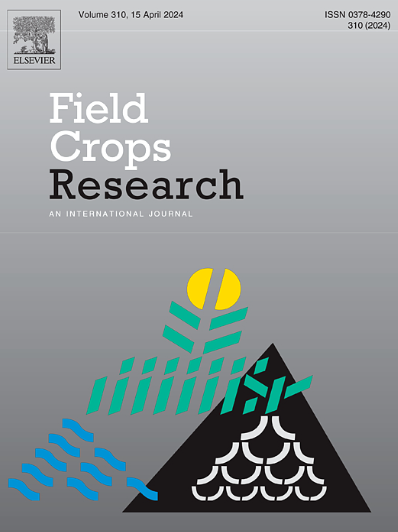Explaining how diversified crop rotation systems reduce soybean yield gap: The case of Uruguay
IF 5.6
1区 农林科学
Q1 AGRONOMY
引用次数: 0
Abstract
Context
The increase in cultivated area in Uruguay’s main cropping systems (CS) has been achieved through a shift from crop-pasture rotation systems to continuous annual cropping systems with a high frequency of soybean. Evidence suggests eliminating perennial pastures and reducing crop sequence diversification may gradually reduce soil quality, limiting the actual crop productivity and generating adverse environmental effects.
Objectives
We hypothesize that as crop rotation diversity decreases, the actual soybean yield (Ya) will also decrease, leading to an increase in exploitable soybean yield gap (YgExp), and consequently compromising future food production capacity. This decline would likely be due to changes in resource efficiency use in response to crop rotation design, modifying the soil quality, which in turn reduces the efficiency of resource use and inputs. The objectives were to quantify the effects on attainable yield (Yatt) and YgExp, identifying the contributions of resource availability and efficiency generated by the cropping system design.
Methods
The study analyzed 64 on-farm experiments on commercial farms representing key regional CS. Two nutrient management approaches were compared: 1) farmer's management, and 2) non-limiting nutrient supply, resulting in 128 soybean yield records. Stochastic frontier analysis (SFA) was used to estimate Yatt based on factors influencing soybean yield, incorporating an inefficiency function into the stochastic frontier production function (SFPF). We estimated a maximum attainable yield (Ymax), calculating the mean above the 90th percentile of Yatt. Ya, Yatt, and Ymax were used to estimate the efficiency yield gap (YgEf = Yatt – Ya) and the yield gap attributable to differences in resource availability (YgRe = Ymax – Yatt). The sum of both allowed us to determine the YgExp. The outcomes were categorized into three productivity levels based on Ya: i) Highest Ya, values above the 90th percentile; ii) Medium Ya, values between the 45th and 55th percentiles; iii) Lowest Ya, values below the 10th percentile.
Results
Average Ya was 3.2 Mg ha−1, YgEf was 1.3 Mg ha−1 and YgRe was 1.7 Mg ha−1. We found that YgEf was partially explained by crop rotation design and supplementary irrigation. Soil quality, measured through soil penetration resistance, and technological improvements, such as increasing the amount of water supplied or enhancing fertilization in high-productive environments, were identified as determining factors of YgRe.
Conclusions
Our findings reveal the susceptibility of soybean yield to the diversity of crop rotation history and highlight water supply, fertilization strategy when water is not limiting, and surface compaction as key factors in limiting Yatt.
Significance
Even without severe management deficiencies, crop yields can be improved with slight enhancements in land-use planning.
求助全文
约1分钟内获得全文
求助全文
来源期刊

Field Crops Research
农林科学-农艺学
CiteScore
9.60
自引率
12.10%
发文量
307
审稿时长
46 days
期刊介绍:
Field Crops Research is an international journal publishing scientific articles on:
√ experimental and modelling research at field, farm and landscape levels
on temperate and tropical crops and cropping systems,
with a focus on crop ecology and physiology, agronomy, and plant genetics and breeding.
 求助内容:
求助内容: 应助结果提醒方式:
应助结果提醒方式:


